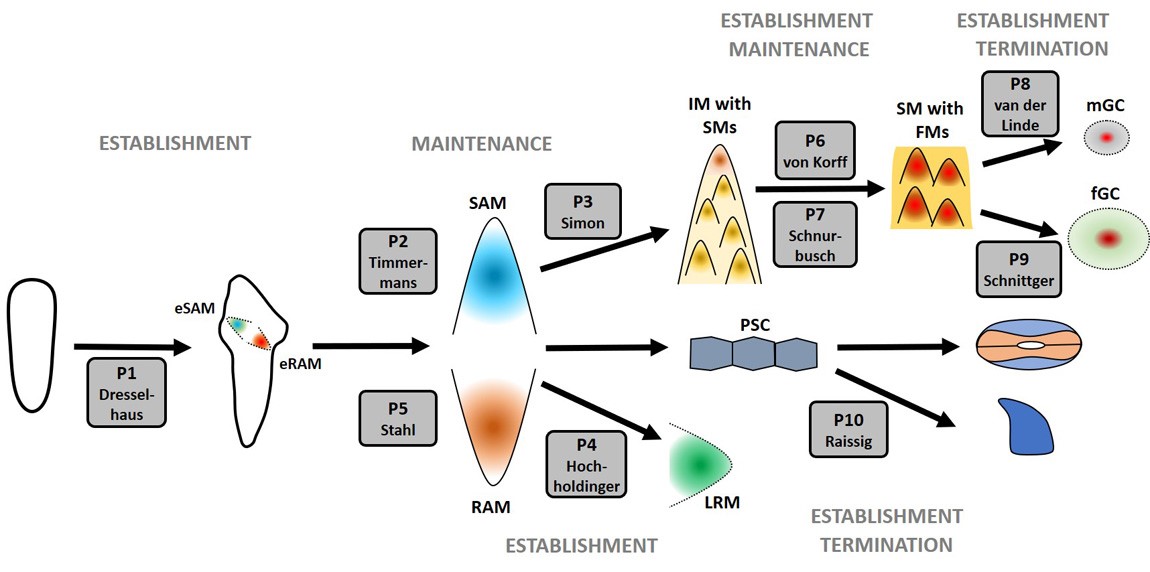Maintenance and Function of the Barley Root Apical Meristem

Crop plants play a crucial role in food production, but climate change poses a challenge for achieving the high yields needed in view of an ever growing population. Water and nutrient availability are vital for plant growth, and roots must respond quickly to changes in soil conditions to optimize uptake. Barley has demonstrated greater tolerance to drought and salt stress compared to other crops, making it a promising organism for studying and improving root growth and development in the face of environmental challenges.
The CSCS consortium is a research unit comprised of ten groups working to understand the conserved and modified signaling pathways necessary for meristem formation and regulation in various crop species. Our project, "Maintenance and Function of the Barley Root Apical Meristem," focuses on regulating the stem cell niche in the RAM of barley.
We use two approaches to gain a deeper understanding of the underlying mechanisms. First, the unbiased approach involves single-cell RNA sequencing and spatial transcriptomics to uncover novel transcription factors and regulatory networks. Second, the biased approach investigates homologues of known transcription factors from the model plant Arabidopsis thaliana to determine whether their function is conserved across different plant species. To study the function of several transcription factors in the barley RAM, we will generate CRISPR mutants and reporter lines and employ techniques such as confocal and light sheet microscopy, as well as FRET-FLIM.
- Anika Dolata M.Sc. | Building 26.14 Floor 00 Room 061|
Cereal Stem Cell Systems (CSCS)
The research unit FOR5235, formed in 2022, aims to investigate the role of conserved and modified signaling pathways and gene regulatory networks in shaping the complex meristems of cereal crops. The research unit, consisting of ten individual teams, focuses on maize as a tropical cereal, barley as a temperate cereal, and the model grass Brachypodium, all of which are representative examples for their respective subfamilies.




